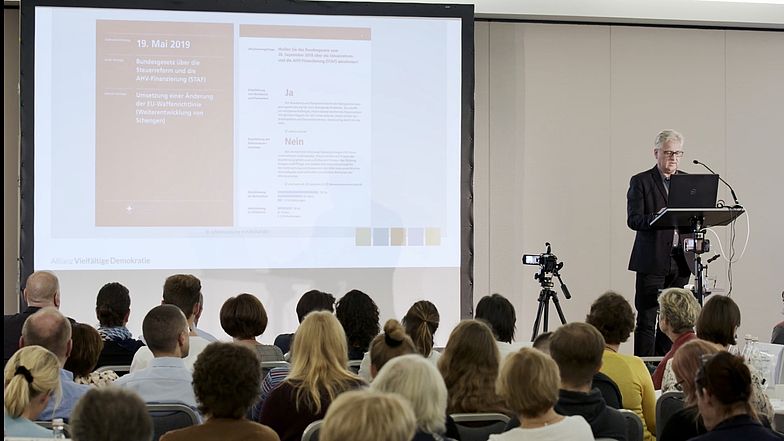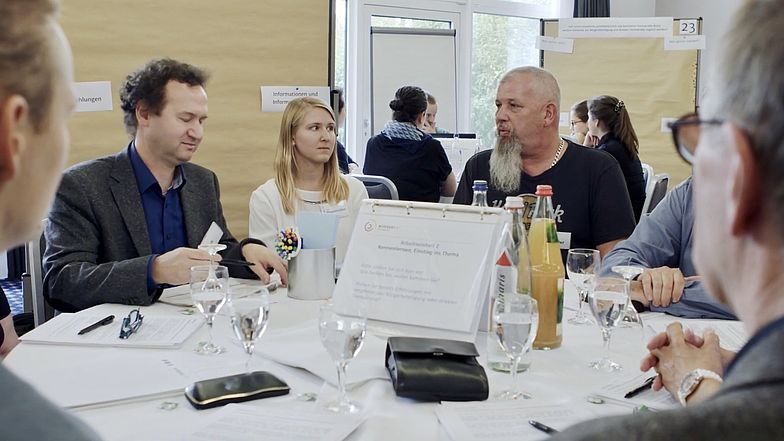The Citizens' Assembly
The heart of our experiment
The citizens’ assembly was at the heart of our democratic experiment. In a secured space, people selected by lot discussed how our democracy should continue. People who would otherwise never have entered into conversation together sat alongside each other to discuss fundamental questions. Those who would otherwise have remained silent were given the opportunity to have their say.
Why a citizens’ assembly?
The participating citizens were meant to discuss differing opinions on the possible additions to parliamentary democracy and its possible further developments. The main issue was the question with which the Commission of Experts at the Bundestag also deals: should parliamentary democracy be supplemented by direct democracy and citizen participation? What does direct democracy have to look like in order for the people to identify themselves with it? A citizens’ report was produced at the end in which the citizens’ assembly compiled its policy recommendations.
What is so special about it?
In a citizens’ assembly, it is not only the “usual suspects” that discuss with each other. In order for this process to succeed, there is an important prerequisite: the discussions take place in small groups to which neither the experts nor the media or politicians have access. Thus, an honest and open discussion in the secured space can take place without worry of “embarrassing” or “unwelcome” statements.
Each citizen should have had the chance to be selected as a participant. For this reason, participants were selected by lot from population registers. There was a detailed concept for the selection of the participants and for the organization of the individual events. The important key points were:
-
All regions of Germany and the various municipal sizes were represented.
-
All people with German citizenship aged 16 or over were eligible to participate.
-
Participants received an expense allowance.
-
If necessary, childcare and relative care was organized, and accessibility was guaranteed.
-
The time requirement was acceptable (4 days of the citizens’ assembly in Leipzig + 1 “Day of Democracy” in Berlin)
How the citizens’ assembly works:
The participants of the citizens’ assembly met twice for two days. They came together as a plenary of about 160 people, received all the necessary information, and then debated in small groups of about eight people. The results were brought back together in plenary and compared with one another. This guaranteed a personal and confidential framework of communication and that the connection to the main topic remained intact. A team of moderators on site ensured that everyone had their say and that the results were properly collected. Once all the suggestions and essential aspects from the small groups had been compiled, the focus and priorities were reset.
In order to have a meaningful discussion, the people had to know about the various democracy instruments and participation possibilities and about their pros and cons. On site, they received all the necessary information through meetings with experts so that all participants were brought to the same level of knowledge. Diverse experts were selected from practical experience, the political and scientific fields, the media, and associations.
A project advisory board ensured that the selection of experts did justice to this goal and that the entire process was transparent and managed in an open manner, including the results. In addition to individuals from the academic world, various civil society organizations were also represented on this advisory board. Media representatives were also invited to accompany the citizens’ assembly and have been present at all events in the plenary sessions.
More Information: Citizens' Assembly on Democratic Reform in Germany (PDF)

